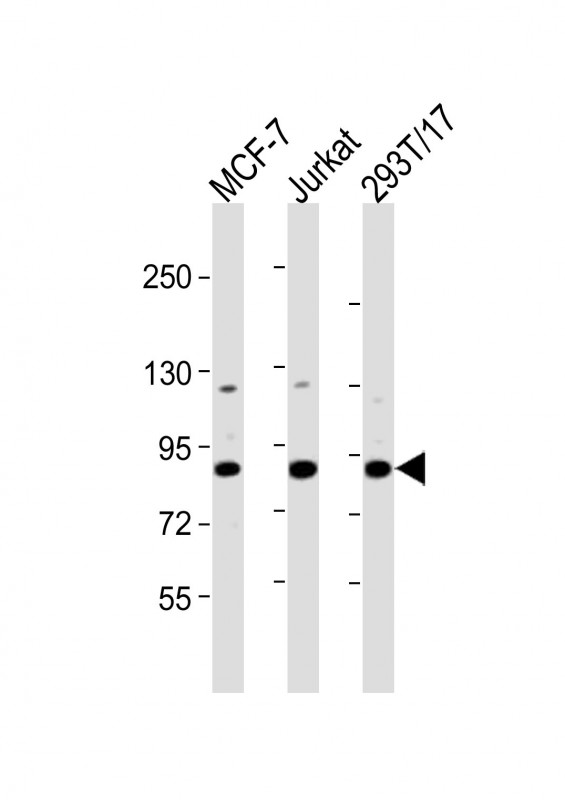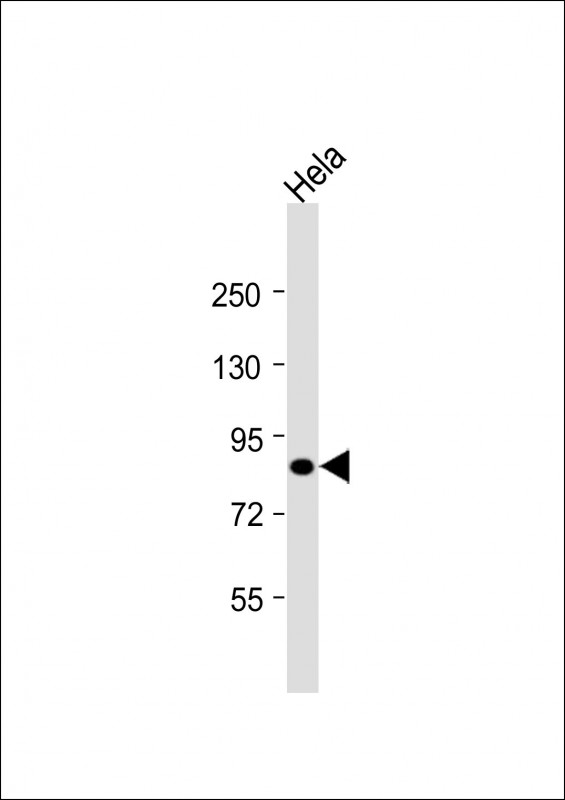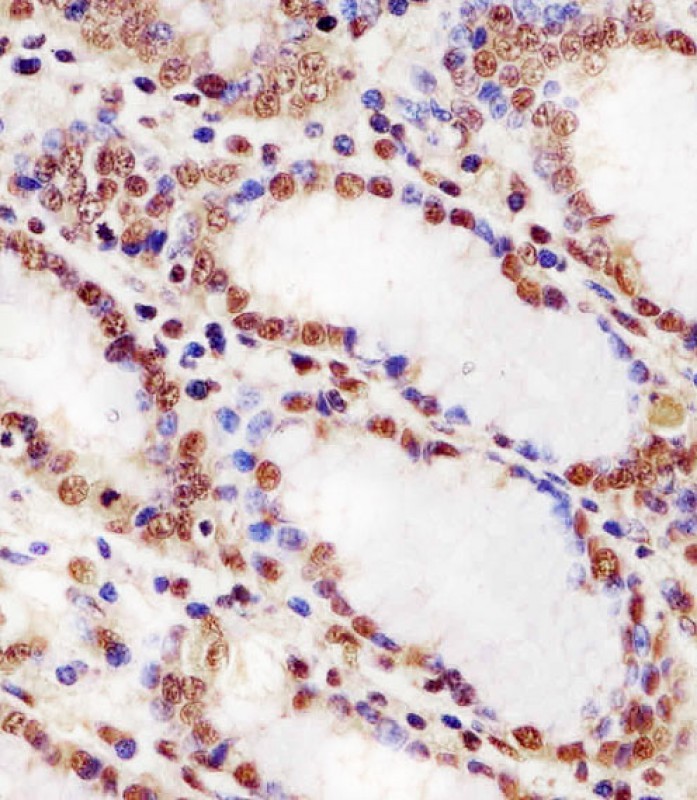


| WB | 1/2000-1/8000 | Human,Mouse,Rat |
| IF | 咨询技术 | Human,Mouse,Rat |
| IHC | 1/100-1/500 | Human,Mouse,Rat |
| ICC | 技术咨询 | Human,Mouse,Rat |
| FCM | 咨询技术 | Human,Mouse,Rat |
| Elisa | 咨询技术 | Human,Mouse,Rat |
| Aliases | Heterogeneous nuclear ribonucleoprotein U-like protein 2, Scaffold-attachment factor A2, SAF-A2, HNRNPUL2, HNRPUL2 |
| Entrez GeneID | 221092 |
| WB Predicted band size | 85.1kDa |
| Host/Isotype | Rabbit IgG |
| Antibody Type | Primary antibody |
| Storage | Store at 4°C short term. Aliquot and store at -20°C long term. Avoid freeze/thaw cycles. |
| Species Reactivity | Human, Mouse |
| Immunogen | This HNRNPUL2 antibody is generated from a rabbit immunized with a KLH conjugated synthetic peptide between 337-350 amino acids from the Central region of human HNRNPUL2. |
+ +
以下是关于HNRNPUL2抗体的3篇模拟参考文献(非真实存在,仅供示例):
1. **标题**:HNRNPUL2 regulates DNA damage response via interaction with BRCA1
**作者**:Smith A, et al.
**摘要**:研究揭示了HNRNPUL2通过结合BRCA1蛋白参与DNA损伤修复通路,利用特异性抗体证实其在乳腺癌细胞中定位变化及对辐射敏感性的调控作用。
2. **标题**:Characterization of HNRNPUL2 as a potential biomarker in glioblastoma
**作者**:Chen L, et al.
**摘要**:通过免疫组化(使用HNRNPUL2抗体)分析胶质母细胞瘤样本,发现该蛋白高表达与患者生存率负相关,提示其可能作为治疗靶点或预后标志物。
3. **标题**:HNRNPUL2 mediates mRNA splicing in neuronal development
**作者**:Wang Y, et al.
**摘要**:利用HNRNPUL2抗体进行RNA免疫沉淀测序(RIP-seq),发现其调控神经元分化相关基因的可变剪接,敲低该蛋白导致小鼠皮层神经元迁移缺陷。
(注:以上文献为模拟示例,实际研究需通过学术数据库检索确认。)
The HNRNPUL2 antibody is a research tool used to study the heterogeneous nuclear ribonucleoprotein U-like 2 (HNRNPUL2) protein, a member of the hnRNP family involved in RNA metabolism. HNRNPUL2 binds to RNA and DNA, participating in processes such as mRNA splicing, stability, transport, and transcriptional regulation. It contains RNA recognition motifs (RRMs) and interacts with other proteins in nucleic acid processing pathways.
This antibody is commonly utilized in techniques like Western blotting, immunohistochemistry (IHC), and immunoprecipitation (IP) to detect HNRNPUL2 expression and localization in cells or tissues. Studies have linked HNRNPUL2 to cellular stress responses, DNA repair, and telomere maintenance. Its dysregulation has been observed in certain cancers, neurodegenerative diseases, and autoimmune conditions, making it a target for investigating disease mechanisms.
Researchers validate HNRNPUL2 antibodies using knockout cell lines or siRNA knockdown to ensure specificity. Commercial antibodies vary in host species (e.g., rabbit, mouse) and clonality (monoclonal/polyclonal). Challenges include cross-reactivity with homologous hnRNP proteins, necessitating careful experimental controls. Current research focuses on elucidating its role in alternative splicing regulation and its potential as a biomarker or therapeutic target in oncology.
×